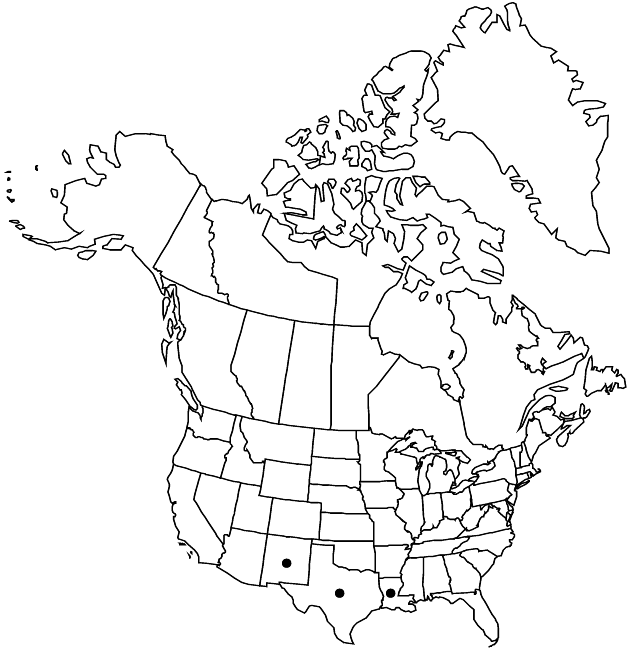Difference between revisions of "Liatris punctata var. mexicana"
Rhodora 48: 354. 1946.
FNA>Volume Importer |
FNA>Volume Importer |
||
| Line 11: | Line 11: | ||
|name=Liatris mucronata var. interrupta | |name=Liatris mucronata var. interrupta | ||
|authority=Gaiser | |authority=Gaiser | ||
| + | |rank=variety | ||
}} | }} | ||
|hierarchy=Asteraceae;Asteraceae tribe Eupatorieae;Liatris;Liatris punctata;Liatris punctata var. mexicana | |hierarchy=Asteraceae;Asteraceae tribe Eupatorieae;Liatris;Liatris punctata;Liatris punctata var. mexicana | ||
| Line 35: | Line 36: | ||
-->{{#Taxon: | -->{{#Taxon: | ||
name=Liatris punctata var. mexicana | name=Liatris punctata var. mexicana | ||
| − | |||
|authority=Gaiser | |authority=Gaiser | ||
|rank=variety | |rank=variety | ||
| Line 50: | Line 50: | ||
|publication year=1946 | |publication year=1946 | ||
|special status= | |special status= | ||
| − | |source xml=https://jpend@bitbucket.org/aafc-mbb/fna-data-curation.git/src/ | + | |source xml=https://jpend@bitbucket.org/aafc-mbb/fna-data-curation.git/src/eaa6e58056e40c9ef614d8f47aea294977a1a5e9/coarse_grained_fna_xml/V19-20-21/V21_1312.xml |
|tribe=Asteraceae tribe Eupatorieae | |tribe=Asteraceae tribe Eupatorieae | ||
|genus=Liatris | |genus=Liatris | ||
Revision as of 19:34, 16 December 2019
Corms elongate or becoming rhizomes. Leaves 50–120 × 2–7 mm. Heads in loose, spiciform arrays (widely spaced, stems evident). Involucres 10–15 mm. Phyllaries in 3–5 series. Florets 4–6. 2n = 20, 40.
Phenology: Flowering Aug–Oct(–Nov).
Habitat: Gravelly and rocky slopes, canyon bottoms, grassy areas, mesquite, commonly over limestone
Elevation: 10–1800 m
Distribution

La., N.Mex., Tex., Mexico (Chihuahua, Coahuila, Nuevo León, San Luis Potosí, Tamaulipas).
Discussion
In the southern third of Texas, and in adjacent Louisiana, New Mexico, and Mexico, heads of Liatris punctata tend to be more widely spaced than characteristic for the species over the rest of its range. The most distinctive plants are in trans-Pecos Texas (and Mexico), and they occur at higher elevations than those in the more eastern range. Corms usually are elongate or rhizomiform; Gaiser described L. mucronata var. interrupta from a variant with subglobose corms. Intergrades in head congestion also are encountered, even northward into the Texas panhandle, and the variety is not sharply delimited. The populations with widely separated heads probably were ancestral to L. bracteata and L. cymosa, as well as a race (yet unnamed) with piloso-hirsutulous leaves, which occurs on the Edwards Plateau.
Selected References
None.